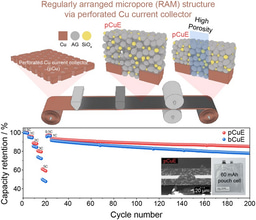Experiences of living with trimethyalminuria, a metabolic disorder which leads to breath and body odour
Published in Public Health
What is trimethylaminuria?
Trimethylaminuria is a rare disorder characterised by impaired metabolism of trimethylamine, a volatile amine which has a strong odour resembling rotting fish. Trimethylamine leaves the body as a gas through the breath, sweat and other bodily secretions, giving individuals an unpleasant and distinctive body odour. There are both acquired and inherited forms of the condition which arise from disturbance of a metabolic axis including the gut microbiome and a hepatic enzyme FMO3.
Why did we do this study?
Individuals with trimethylaminuria often appear physically healthy. However, we now understand the disorder in its biopsychosocial context and know that social isolation and stress eventually impact negatively on physical health. Until now there has been only anecdotal and small study evidence of the psychological and social consequences of living with trimethylaminuria. It is estimated that 1 in 40,000 people may have the inherited form of the disorder, with many more having a mixed or acquired version of the disorder. There is currently no guidance on the diagnosis and management of trimethylaminuria in the UK.
What did we find?
Our findings show that trimethylaminuria can cause immense hardship and distress. Quantitative data showed that 90% of respondents felt disadvantaged in the workplace, and 90% felt disadvantaged in their social lives. Interestingly, only 28% and 21% of respondents felt disadvantaged in school or university respectively. 90% of respondents had suffered bullying, harassment, and ostracism in the workplace. Another key theme which emerged was difficulty and delay in gaining a diagnosis or diagnostic test. Only 73% of respondents had been offered a diagnostic urine test for trimethylaminuria, and only 22% had been offered a genetic test. Qualitative responses highlighted a concerning lack of understanding and compassion from clinicians, and that people with trimethylaminuria generally felt unsupported by the health service.
What next?
Respondents had an opportunity to suggest changes which would improve quality of life. Many suggested that a greater understanding of trimethylaminuria and its consequences by their healthcare providers, authority figures and the public. Respondents wished that there were protections in place to stop them from being discriminated against, others thought that because of the unpredictable nature of symptoms more flexibility in work and study would be beneficial. These suggestions could be facilitated by classifying trimethylaminuria as a disability under the Equality Act 2010. This would protect individuals from discrimination and allow reasonable adjustments by employers and educators.
There are currently no definitive treatments for trimethylaminuria, but trimethylamine excretion can sometimes be lessened with a restrictive diet, riboflavin supplements, and probiotics. Short-term antibiotic therapy has been used in some individuals, however this does not cause long-term symptom relief. Importantly, there is no clinical guidance for the management of trimethylaminuria. Publication of such evidence-based advice would be hugely beneficial for clinicians and patients alike.
Follow the Topic
-
BMC Public Health

An open access, peer-reviewed journal that considers articles on the epidemiology of disease and the understanding of all aspects of public health.
Related Collections
With Collections, you can get published faster and increase your visibility.
Male reproductive health
BMC Public Health invites submissions to our new Collection, "Male reproductive health”. Male reproductive health is an essential yet often overlooked aspect of public health that encompasses various factors affecting men's fertility and overall well-being. Issues such as declining sperm counts, poor sperm quality, the impact of environmental exposures and the effects of lifestyle and dietary factors on reproductive outcomes are gaining increasing attention.
This Collection seeks to examine the multifaceted influences on male reproductive health, considering environmental, infectious and sociocultural dimensions that affect male reproductive parameters and contribute to fertility challenges. Continued research in this area could help identify causative factors and contribute to advances in public health policies, ultimately benefiting future generations.
Key topics of interest include, but are not limited to:
Environmental pollution and reproductive health
Sperm count trends and implications for fertility
The role of occupational exposures in male fertility
The effects of infectious diseases on sperm parameters
Impact of diet and lifestyle factors on sperm quality and fertility
Psychological factors influencing reproductive health
Interventions for improving male reproductive health
This Collection supports and amplifies research related to Sustainable Development Goal 3- Good Health and Well-Being.
All manuscripts submitted to this journal, including those submitted to collections and special issues, are assessed in line with our editorial policies and the journal’s peer review process. Reviewers and editors are required to declare competing interests and can be excluded from the peer review process if a competing interest exists.
Publishing Model: Open Access
Deadline: Mar 29, 2026
Monitoring, preventing, and managing type 2 diabetes
BMC Public Health is calling for submissions to our Collection on Monitoring, preventing, and managing diabetes at the population level. With rates of type 2 diabetes rising globally, especially in low- and middle-income countries and underserved communities, prevention strategies are critical. As the disease progresses people with diabetes are at increased risk of complications such as cardiovascular and kidney diseases, neuropathy and visual loss.
This Collection seeks submissions that explore population-level approaches to monitoring rates of diabetes, preventing or delaying the development of type 2 diabetes, and system-wide efforts to improve the management of the disease and reduce rates of complications, with a focus on improving health outcomes and reducing healthcare burdens.
Submissions are encouraged on primary prevention initiatives and culturally adapted, community-level interventions to reduce the risk of diabetes. Research aimed at improving systems for monitoring rates of diabetes and its complications through routinely-collected health data, or for improving management by enhancing patient engagement with healthcare systems or better identifying those in need, are encouraged. Research on diabetes education and support systems is also welcomed, with a focus on empowering individuals to adopt and sustain healthier lifestyles and avoid known causes of diabetes.
Additional topics of interest include (but are not limited to):
Access to healthcare and diabetes management
The impact of food insecurity on diabetes outcomes
Community-based interventions for low-income populations
Interventions to reduce exposure to environmental causes of diabetes
Financial barriers to diabetes medication and treatment
Housing instability, employment status and type 2 diabetes
Health literacy, poverty, and diabetes management
Policies to reduce poverty-related health disparities in diabetes
This Collection supports and amplifies research related to SDG 3: Good Health & Well-Being.
All manuscripts submitted to this journal, including those submitted to collections and special issues, are assessed in line with our editorial policies and the journal’s peer review process. Reviewers and editors are required to declare competing interests and can be excluded from the peer review process if a competing interest exists.
Publishing Model: Open Access
Deadline: Jul 16, 2026





Please sign in or register for FREE
If you are a registered user on Research Communities by Springer Nature, please sign in